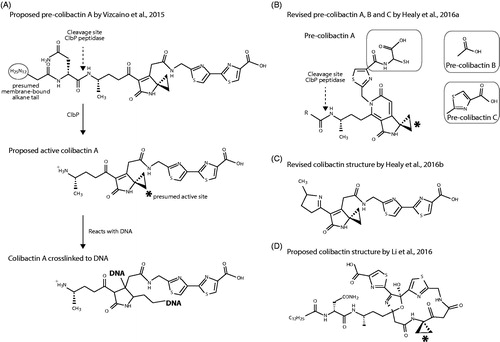Figures & data
Table 1. Cyclomodulins of E. coli.
Table 2. Mouse models demonstrating cancer-inducing properties of E. coli.
Table 3. Observations pro and against the carcinogenic effect of E. coli colibactin.


